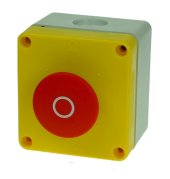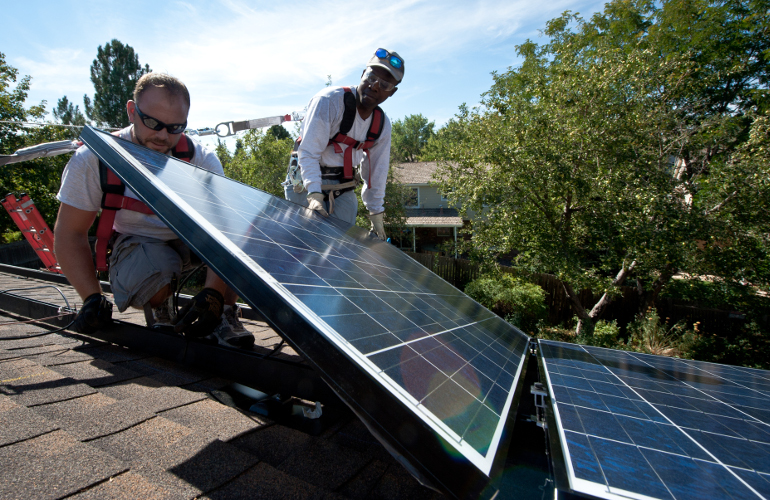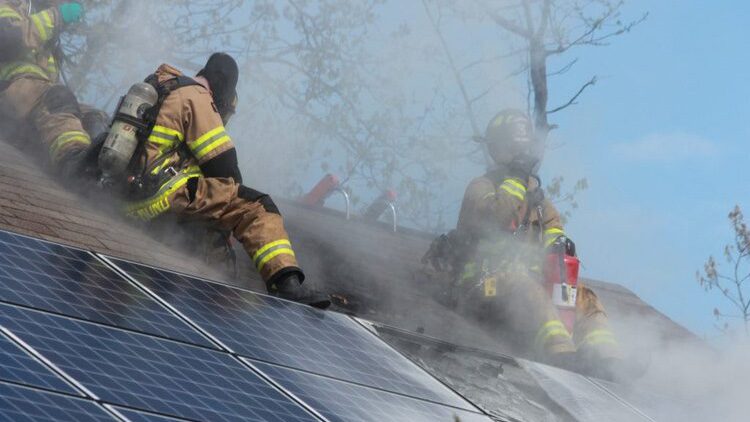The AC coupling aspect is working perfectly.
My original system is 16 x 300 watt panels with Enphase iQ7 microinverters. They are on the essential loads panel on the output side of my Schneider XW-Pro inverter. I have only had 4 grid outages, and only one lasted a full day, but that was enough to see the system works perfect off grid. The only odd issue I ran into was the XW-Pro maximum battery charge current was dialed down to just 18% or just over 25 amps. I was not home when the grid went out, so the system did it's thing. The transfer relays opened, and the XW stated supplying the loads. The glitch from the switchover caused 2 of the microinverters to see bad power, so they waited the 5 minutes to come back online. It was cloudy when the grid first failed, so I can see the battery going between discharging a bit to charging a bit for the first hour of the outage, but then the clouds cleared a bit and the sun came out. The Enphase inverters were then making way more power than the essential loads needed, and the charge rate quickly went up above the set 25 amp limit. The XW-Pro responded by ramping up the frequency as expected, but evidently the iQ7's didn't reduce their output fast enough and/or far enough so the frequency ended up shifting far enough that 5 of the iQ7's saw it as grid frequency out of range, but the other 11 kept running. The loss of the 5 was enough that the battery charge current fell below the 25 amp limit, so it ramped the frequency back down. The iQ7 inverters came back on, etc. and this repeated about 5 times before the sun fell too low to produce too much charge current.
Had I been here, I would have certainly turned up the maximum charge current to allow it to capture the extra solar energy. The system stayed running on batteries until 1 am when the grid came back up.
I have 3 reasons I want to add DC solar charging to my system now.
1. Mainly to fully automate the battery charging without any external control needed. Even if I get the external control all working perfectly like 400bird, the DC charging is a failsafe that will work even if the network crashes etc.
2. Efficiency. Each time I cycle 10 kilowatt hours in and back out of the batteries with AC coupling, I am throwing away a full kilowatt hour to conversion losses. As efficient as the iQ7's are, the XW-Pro needs to then take the AC and convert it back to DC to charge the batteries. The DC charge controller is a much more efficient way of putting solar energy directly into the batteries. And it nearly eliminates my need to even bother with charge rate control of the XW, because while the sun is up, the XW will just sit in standby with the Enphase running the house loads, and the charge controller charging the batteries to use in the evening. Charge rate will just be everything I can get from the DC panels.
3. Dark Start. Hopefully this is never a problem, but it is certainly a big potential pain in the neck. With only AC coupling, you can get stuck. Let's say the battery bank runs down to where the XW-Pro has to stop inverting in the middle of the night. What happens when the sun comes up? NOTHING! With the battery based inverter shut down from low battery, there is no "grid" so the microinverters can't turn on either. My current solution is leaving my low battery shut off set to still have 50% in the batteries. Then in the morning, I can fire up my laptop on battery, and set the low battery limit lower and get the system to start. But it will take a few manual steps. With the DC solar charge controller, when the sun comes up, it will just start charging the battery bank. Once the batteries climb just 0.5 volts, the inverter will fire up, and then after the 5 minute delay, the microinverters will also start up. No human intervention needed at all.
I truly believe that the combination of AC and DC coupling in the same system is the best of both worlds.







